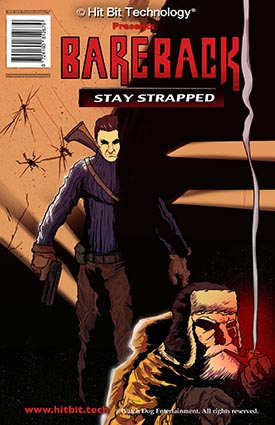In the realm of creative expression, the advent of Artificial Intelligence (AI) has sparked a transformative dialogue about the essence and future of art, especially within the specific context of comic book artistry. This discourse navigates the nuanced intersection between technological advancement and human creativity, questioning whether AI serves as a tool that enhances artistic intelligence or a revolutionary force that is redefining the very parameters of artistry.
 At the core of this exploration is the comic book industry, a domain traditionally characterized by its intensive manual labor and personal touch. The creation of comic book art—a meticulous process involving penciling, inking, coloring, and lettering—is being revolutionized by AI technologies. These tools, equipped with machine learning algorithms, can replicate intricate patterns, generate color palettes, and even suggest narrative directions based on vast datasets of existing comic art. This capability not only streamlines the production process but also introduces a level of precision and efficiency previously unattainable by human hands alone.
At the core of this exploration is the comic book industry, a domain traditionally characterized by its intensive manual labor and personal touch. The creation of comic book art—a meticulous process involving penciling, inking, coloring, and lettering—is being revolutionized by AI technologies. These tools, equipped with machine learning algorithms, can replicate intricate patterns, generate color palettes, and even suggest narrative directions based on vast datasets of existing comic art. This capability not only streamlines the production process but also introduces a level of precision and efficiency previously unattainable by human hands alone.
However, the integration of AI in comic book creation raises philosophical questions about the role of the artist in the creative process. Does the use of AI-enhanced tools diminish the authenticity of the art form, or does it empower artists by freeing them from the tedium of repetitive tasks, thereby allowing more space for creative ideation? Proponents of AI in art argue that it amplifies human intelligence, providing artists with a new set of tools to explore uncharted territories of creativity. They envision a collaborative future where AI serves as a digital muse, inspiring artists with suggestions that push the boundaries of traditional storytelling and visual representation.
Amid these debates, it’s crucial to recognize that the convergence of AI and comic book art does not signify the replacement of human creativity but rather its evolution. The potential of AI to redefine artistry lies not in its ability to mimic human creativity but in its capacity to enhance it. By automating aspects of the creative process, AI enables artists to focus on the essence of storytelling, pushing the boundaries of narrative and visual expression. This collaborative synergy between human and machine opens new vistas for comic book art, where the augmentation of artistic intelligence by AI paves the way for innovative storytelling techniques and visually stunning artworks that were once beyond the realm of possibility.


 04 Feb 2024
04 Feb 2024
 Posted by Watchdog Ent.
Posted by Watchdog Ent.  0 Comment
0 Comment 











